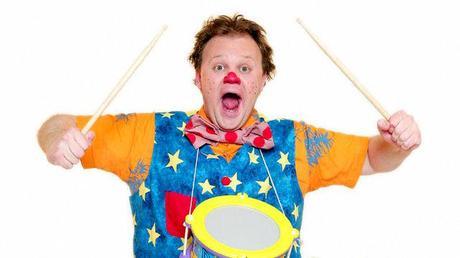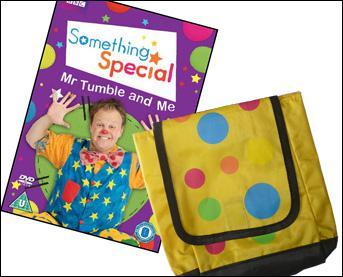 Once upon a time, people understood the human mind even less than they do now. People classified as ‘mentally disturbed’ were sometimes institutionalised. Sometimes that happened to people with learning disabilities and deaf people too, if their behavior was considered particularly ‘odd’.
Once upon a time, people understood the human mind even less than they do now. People classified as ‘mentally disturbed’ were sometimes institutionalised. Sometimes that happened to people with learning disabilities and deaf people too, if their behavior was considered particularly ‘odd’.
Then along came the Sixties and the birth of the disabilities rights movement in the US, when people with disabilities began asserting not just their equality and human rights but also their own identities or ‘labels’ as they saw fit. By the Seventies the movement had spread to Britain, mobilizing the Deaf Community into identifying their own deaf rights. BSL was officially recognised by the UK Government in 2003, after which on-going legislation ensued to guarantee the language’s legal protection.
£1 million was invested into the training of sign language interpreters (SLIs), and deaf people of my generation and below went on to excel professionally in the media, among them Mark Nelson – who launched Remark! with then co-director Ramon Woolfe in 2000 - Samuel Dore, Ted Evans and Caroline O’Neill.
In 2008 the British Sign Language Broadcasting Trust (BSLBT) was founded with the intention of enabling commercial broadcasters to meet their regulatory requirements to provide sign language on qualifying channels. They commissioned a whole load of shorts, dramas, and TV programmes presented in BSL, increasing the visibility – and hopefully acceptance – of the language.
Then Something Special popped up on Cbeebies, along with a signing clown called Mr Tumble and a magic spotty bag that could be used to transport anything – and once again people started confusing learning-disabled people with deaf people.
Now, I have nothing against Mr Tumble creator Justin Fletcher personally. By all mainstream accounts he seems like a nice man – and popular too, judging by the cult following gained by the many characters and voices he has provided for the Cbeebies channel. (By ‘cult following’ I mean adults, not children: apparently they find Justin’s characters funnier than any off The Fast Show.)
Of course, Justin started Something Special as a way of reaching out to children with learning disabilities. From a pilot in 2003 it has surpassed expectations by becoming a popular daytime TV show that appears most weekdays – and Justin even got a MBE for his good work.
So what’s the problem? The sign ‘language’ Something Special teaches is Makaton, not BSL. Now I’ve expressed my reservations about Makaton before – and I am even more dubious about it now I’ve seen Justin’s demonstrations on the programme.
Others may argue that Something Special is aimed at a far larger audience than just deaf children – National Deaf Children’s Society (NDCS) statistics put the figure for deaf children at over 45,000, while in 2006 the Department of Children, Families and Schools (DCFS) suggested that 210,510 children were identified as having a primary special educational need (SEN) associated with learning disabilities (my italics).
This is an important distinction. Learning disabilities can be very difficult to diagnose. I know of one man who was finally identified with Asperger’s Syndrome at the age of 40. Sometimes doctors can’t tell if a young child has a learning disability or a barrier to learning brought on by other disabilities (such as cerebral palsy, like Isobel, or even deafness). So at that age, they’re all educated as if they have learning disabilities.

Unfortunately, thanks to its high profile, parents think Something Special is a great introduction to sign language – unaware that unlike BSL, Makaton isn’t even a language, but a communication system devised by speech therapists to bridge learning gaps in spoken language in young children. Hell, it’s not even widely used beyond school, illustrating its limitations as a long-term communication tool.
As you can imagine, Makaton infuriates many within the Deaf Community committed to the BSL cause on so many levels. Not only is it patronising, in terms of context and meaning it’s also confusing and risks causing offense.
Indeed, Justin has been reprimanded before for inadvertently using a sign that echoes the BSL for the ‘F’ word. Imagine if we met him in person. How would he sign his pleasure at meeting us? “I’m so f*****, f*****, f***** to see you.”
This is just one example. Nearly every week at least one sign he or Mr Tumble teacheson Something Special perplexes us, because we can’t see how that sign could be easier to understand than its BSL equivalent. Yet we still get people signing enthusiastically to us in Makaton, because they genuinely can’t tell BS from BSL.
It gets worse. Last January, Ofsted released a consultation document that they claimed was aimed at Deaf BSL users. It actually resembled a PCS sheet. Thankyou very much, Mr Tumble. Did you give them the template for that in your spotty bag?
But what can we do? Something Special is the only TV programme on a mainline channel where children with a wide variety of disabilities are regular guests; the only one Isobel watches, transfixed, from beginning to end. The only one that she remembers when it’s on (something she doesn’t do with other children’s programmes). Clearly, she relates to not just the children on the show, but also the pace and simplicity of its format, which in many ways reflects PACE itself.
Meanwhile, the BSLBT’s children’s programmes go out on FilmFour in the early mornings just once a month, sandwiched between glossy American gym-body adverts: hardly the best incentive to get children watching. True, there are mainstream children’s daytime TV programmes with in-vision signing, but they suit only those viewers already fluent in BSL.
So when we see Mr Tumble stumble clownishly into view once again with his painted nose and spotty bag – and once again, hope and expectation crosses Isobel’s face – the only sign of our dissatisfaction we can give him is narrowed eyes and lips pursed in silence, before walking out of the room.
51.807220 -0.812766
